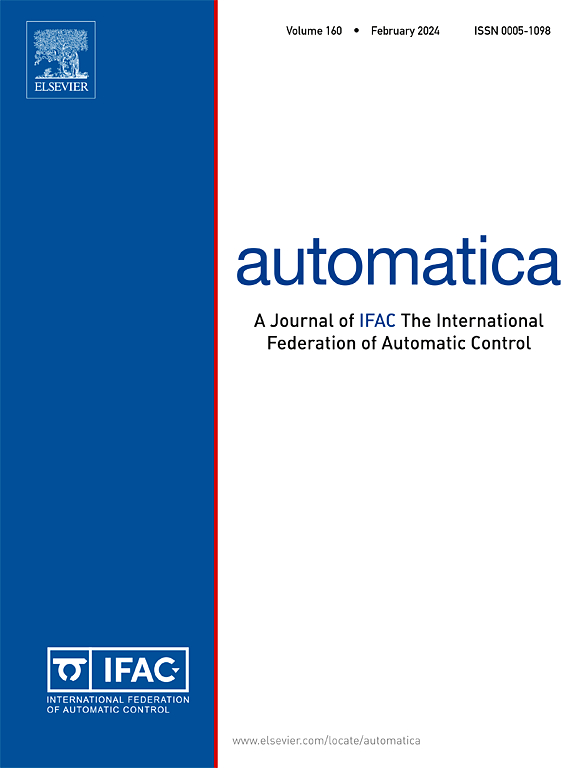带有剪切随机梯度的在线分布优化:高概率遗憾界
IF 5.9
2区 计算机科学
Q1 AUTOMATION & CONTROL SYSTEMS
引用次数: 0
摘要
本文研究了基于智能体网络的在线分布式优化问题。每个智能体在前一时刻只能访问自己目标函数的随机梯度,并且可以通过时变网络与相邻智能体进行通信。为了解决这一问题,提出了一种在线分布裁剪随机梯度下降算法。动态后悔用于捕捉算法的性能。特别地,分析了随机梯度满足重尾噪声条件时的高概率界。对于凸情况,动态后悔的离线基准是每次寻求目标函数的最小值。在对图连通性的温和假设下,我们证明了在一定的剪切参数下,动态后悔以高概率次线性增长。对于非凸情况,动态后悔的离线基准是每次找到目标函数的驻点。结果表明,当目标函数的变化在一定的速率内增长时,动态后悔率以高概率次线性增加。最后,通过数值模拟验证了理论结果的有效性。本文章由计算机程序翻译,如有差异,请以英文原文为准。
Online distributed optimization with clipped stochastic gradients: High probability bound of regrets
In this paper, the problem of online distributed optimization is studied via a network of agents. Each agent only has access to a stochastic gradient of its own objective function in the previous time, and can communicate with its neighbors via a time-varying network. To handle this problem, an online distributed clipped stochastic gradient descent algorithm is proposed. Dynamic regrets are used to capture the performance of the algorithm. Particularly, the high probability bounds of the regrets are analyzed when the stochastic gradients satisfy the heavy-tailed noise condition. For the convex case, the offline benchmark of the dynamic regret is to seek the minimizer of the objective function each time. Under mild assumptions on the graph connectivity, we prove that the dynamic regret grows sublinearly with high probability under a certain clipping parameter. For the non-convex case, the offline benchmark of the dynamic regret is to find the stationary point of the objective function each time. We show that the dynamic regret increases sublinearly with high probability if the variation of the objective function grows within a certain rate. Finally, numerical simulations are provided to demonstrate the effectiveness of our theoretical results.
求助全文
通过发布文献求助,成功后即可免费获取论文全文。
去求助
来源期刊

Automatica
工程技术-工程:电子与电气
CiteScore
10.70
自引率
7.80%
发文量
617
审稿时长
5 months
期刊介绍:
Automatica is a leading archival publication in the field of systems and control. The field encompasses today a broad set of areas and topics, and is thriving not only within itself but also in terms of its impact on other fields, such as communications, computers, biology, energy and economics. Since its inception in 1963, Automatica has kept abreast with the evolution of the field over the years, and has emerged as a leading publication driving the trends in the field.
After being founded in 1963, Automatica became a journal of the International Federation of Automatic Control (IFAC) in 1969. It features a characteristic blend of theoretical and applied papers of archival, lasting value, reporting cutting edge research results by authors across the globe. It features articles in distinct categories, including regular, brief and survey papers, technical communiqués, correspondence items, as well as reviews on published books of interest to the readership. It occasionally publishes special issues on emerging new topics or established mature topics of interest to a broad audience.
Automatica solicits original high-quality contributions in all the categories listed above, and in all areas of systems and control interpreted in a broad sense and evolving constantly. They may be submitted directly to a subject editor or to the Editor-in-Chief if not sure about the subject area. Editorial procedures in place assure careful, fair, and prompt handling of all submitted articles. Accepted papers appear in the journal in the shortest time feasible given production time constraints.
 求助内容:
求助内容: 应助结果提醒方式:
应助结果提醒方式:


